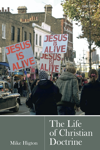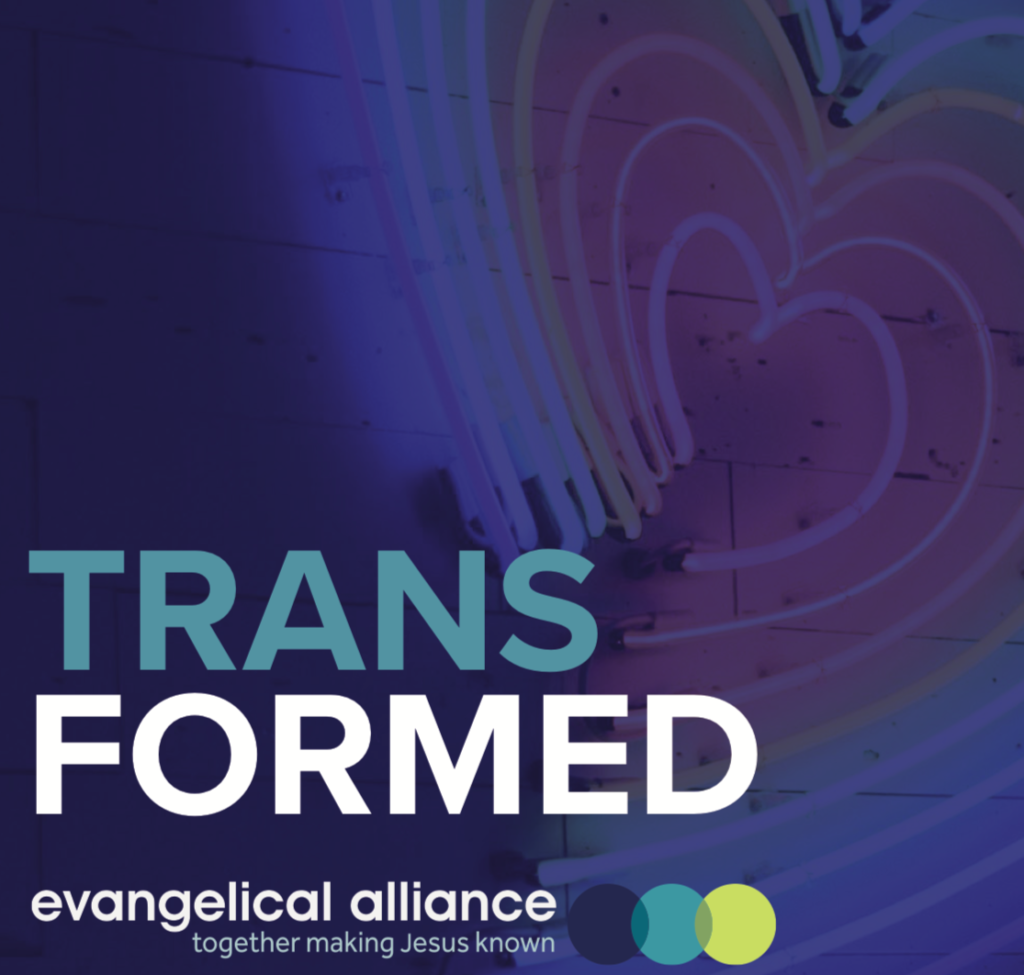Recently, ‘Over 2500 Christian Ministers and Pastoral Workers’ signed a public response to the government’s consultation on the proposed ban of Conversion Therapies.
The response takes the form of a letter and an accompanying ‘background and analysis’ report. They express the concern that, as currently framed, the proposed ban will (perhaps inadvertently) have the effect of criminalising some ‘normal practices of religion’, in which Christian ministers and parents seek to persuade people to follow common Christian moral teachings.
To anyone who knows me well, it will come as no surprise to find that I disagree with almost everything the letter and report say about gender and sexuality, and their place in Christian morality. In this post, however, it is not my intention to pursue those debates, nor to speak only to those who might take my side in them. My purpose here is much more limited. It is to make a set of claims that I believe might in principle be recognised and accepted even by those who agree with the broad thrust of the theology expressed in the letter and report.
My argument is that (perhaps inadvertently) the letter and report could have the effect of
- protecting clearly abusive behaviour not just from criminalisation but from censure;
- promoting ways of thinking that can be used to justify such abuse;
- making it harder for those who have suffered and are suffering from such abuse to have their testimonies and cries for help taken seriously; and
- encouraging those who hear such testimonies and cries to blame the victims of this abuse rather than the perpetrators.
These are strong claims, but I will back them up below.
To be clear: my claims are about the words in the letter and the report, not about the authors’ intentions or motivations, still less those of the many signatories. The words the authors have produced are, as they stand, dangerous. They have the capacity to do harm. The authors may not intend this harm; they may not even have seen that their words could be taken this way. Nevertheless, once the danger posed by their words has been pointed out, they have a responsibility to mitigate it. I will therefore argue that those responsible for these words should withdraw or revise what they have written, and that, until they do so, all those who have signed the letter should distance themselves from it.
Note on references: Quotes referenced by a page number are from the letter; those referenced by a paragraph number are from the accompanying report.
Testimonies of abuse
One of the main drivers for the proposed ban on Conversion Therapy is the weight of testimony from people who have been through such therapies, and who have experienced significant psychological or emotional harm. It is not hard to find such testimonies; large numbers are available in the public domain, as a quick Google search will reveal. They vary widely, both in the descriptions they give of what people underwent, and in their accounts of the damaging done.
There is a lot that, in another context, I would want to say about these testimonies. I would want to make stronger claims in relation to them than I shall here. In the context of this post, however, I will restrict myself to the following minimal claim: There are people – a considerable number – who have been harmed by some practices of Christian ministry that seek to change their sexual orientation or their experience of gender. I am not here talking about those who have experienced physical coercion and abuse (though there are such cases). I am talking about those who have experienced practices of ministry that were emotionally manipulative, that have had deep effects on their mental and physical well-being, and that amounted to psychological abuse.
(For an initial definition of ‘psychological abuse’, see the Church of England’s fact sheet, ‘Types of Abuse’, §3.3.)
The questions I have in mind as I approach the letter and report are: How do this letter and report encourage us to respond to people who have experienced this kind of abuse? And how might they encourage their readers to respond to someone who in future raises a safeguarding concern of this nature? These questions are at the centre of this debate.
Denying the problem
The first response that I find in the letter and accompanying report is denial: denial that such abuse exists, or that it constitutes a serious problem.
The report does raise the possibility that such abuse exists. ‘If there is firm evidence of a real and current problem with coercive and abusive therapies, not covered by existing law,’ the authors say, ‘we have no problem with legislating against them’ (§4, emphasis mine.) Elsewhere, however, this possibility is not taken seriously. The letter suggests that the problem that the proposed ban is trying to tackle is one of ‘evil and disreputable past practices which are already illegal and which Christians are the first to condemn’ (p. 1; my emphasis). The report suggests that it is one of ‘disreputable, cruel and thoroughly unchristian practices of some quack therapies in the past’ (§2; my emphasis). I can find no direct acknowledgement in the letter or the report that there is any current problem in Christian contexts.
The implicit but clear response to those who testify that they have recently experienced abuse, or those who cry out because they are still experiencing it, or any who raise safeguarding concerns in this area in the future, is that they are wrong. There is no serious problem here that needs facing and addressing. It is all in the past.
Claiming compassion
One possible response to the claim I have just made would be to note that, although there is no direct acknowledgment that people in the present are suffering psychological abuse as a result of Christian ministry in this area, there are several references to the idea that such Christian ministry should be ‘loving, compassionate’ (p. 2), and conducted ‘with gentleness and respect’ (p. 1). Doesn’t that implicitly acknowledge, and rule out, forms of ministry that are unloving and lacking in compassion – forms that are abusive and coercive?
Reference to love and compassion could have allowed the authors of the letter to call out patterns of ministry that are emotionally manipulative and damaging in precisely the way that many victims have described. The authors could have used an insistence upon compassion and gentleness to acknowledge and distance themselves from such abusive and coercive practices. As the report goes on, however, it becomes clear that the language of love and compassion are working quite differently.
First, it is claimed that this love, compassion, gentleness and respect already characterise the churches – at least, those churches whose ministers have signed the letter, or that agree with the teachings set out in the report. ‘We always seek to act in love, with gentleness and respect, for the good of all, and never with any form of coercion or control’ (p.1). This language is deployed in such a way as to suggest that there are no serious failings in love, compassion and gentleness in our churches. It is not deployed in such a way as to encourage us to be on the lookout for such failures, or to devote any energy to rooting them out. The talk of love and compassion is not allowed to disturb the insistence that coercion and abuse are safely past, and already safely condemned.
Second, when the report does call out any actions as unloving, they are not the patterns of ministry named in the testimonies of victims. What is ‘supremely compassionate’ (§9), according to the authors, is to pass on the kind of teachings that the letter and report sets out. What is ‘terribly harmful’ (p. 1) is to go against those teachings. And that is all the content given here to either ‘compassion’ or ‘harm’.
I am not here mounting the argument that the authors are wrong to call their teachings compassionate, and the rejection of those teachings harmful. That is an argument I am more than willing to make – but it is an argument for a different day. My concern today is much more specific: it is that, as far as I can see, this is the only kind of harm that the letter and report acknowledge as a danger faced in this area of contemporary Christian ministry.
In other words: far from qualifying what I said earlier, the language of love and compassion is used in the report in such a way that it reinforces its denial that there is a problem of coercive or abusive Christian ministry to tackle in this area.
Raising the stakes
There is a third problem with the idea that the letter and report’s talk of love and compassion qualifies its implicit denial of claims about abuse. As noted, the report claims that ‘Living by, teaching and helping people to follow God’s pattern of marriage is a supremely compassionate thing to do’ (§9). The compassion involved is, as the authors present it, one of rescuing people from a terrible and deadly mistake. The rhetoric of the report is stark.
In relation to gender transition, for instance, the authors are clear that they see themselves as trying to avoid actions that are ‘exceptionally damaging’ (§30), a matter of ‘irreversible damage’ (§30), and tantamount to ‘an appalling crime’ (§31). In the light of that ‘we will do all that is in our power to encourage young people away from’ gender transition’ (§30, my emphasis).
These phrases are deeply chilling, especially in the current climate. One need only consider what is happening in Texas, for instance, to understand how very threatening they sound.
My point here, however, is this. The stakes, as the authors present them, are very high indeed. The harms that they believe they are seeking to avoid are so serious that they demand strenuous and uncompromising action – and the strenuous and uncompromising nature of this action is precisely what compassion requires. The question is bound, then, to arise: What limits might there be on appropriate action in this area? If, as you see it, you are trying to rescue someone from an ‘appalling crime’, what forms of persuasion are really off limits for you?
Christian leaders are, according to the letter and the report, to ‘urge and assist’ (p. 1), ‘to persuade, to teach and to help’ (p. 2), to ‘teach and train’ (§5). These are part of the ‘normal practice of religion’ (p. 1). Yet I can see no acknowledgment here that these normal practices can and do sometimes take forms that are emotionally manipulative and psychologically abusive – and that they can take these forms, at times, precisely because those engaged in them believe the stakes to be so high, and believe that the primary demand of compassion is that they try ever harder in their urging, persuading and training.
There is no acknowledgment here that, if you make such strong claims about how much this ministry is needed, you need to make claims no less strong about the dangers that attend such zeal, about the need for protection against those dangers, and so about the need for strict limits upon the forms that such ministry can properly take.
Dismissing feelings
At various points, the authors speak dismissively of ‘feelings’. They believe in a God-given plan for people’s identities and relationships, and they present those who disagree with them as believing that ‘their identity is found purely in their feelings’ (p. 1) – their ‘subjective feelings and attractions’ (§11; cf. §18). They make clear that they believe such feelings to be insubstantial and potentially deceitful, and that following God’s plan is likely to involve denying them (§9).
The problem is that this way of talking about feelings provides a framework, whether deliberately or inadvertently, for dismissing claims of psychological abuse. Such abuse is, after all, in significant part abuse carried out in the realm of feelings.
The picture painted in the letter and report is one in which Christian ministers are trying – in their urging, persuading, and training – to convey certain Christian truths, and in which the main thing standing against those truths is ‘subjective feeling’. If that is the framing you have internalised, then when a recipient of such urging, persuading and training reports an experience of emotional manipulation or psychological harm, you will have an easy response ready to hand: ‘That is just your feelings.’ And feelings, in this picture, often need to be overridden, at any cost.
There are significant problems with the way the report uses this language of feelings. It seems to me, for instance, to be a thoroughly inadequate way of talking about the deep-seated patterns of experience involved in gender identity and sexuality. On another occasion, I have also written about the strange dualism involved in the contrast between biology and feelings that the authors deploy. For my present purposes, however, all of that can be left to one side.
My claim here is much more limited: it is that the letter and report provide no counterbalance to the idea that negative reactions to the urging, persuading and training employed by Christian ministers are simply a matter of subjective feelings, and that such feelings have no real weight – or that they are no more than evidence of sinful resistance to the truth. In this framework, it becomes all but impossible to take seriously the idea that such ministry might cause deep psychological harm.
Insisting on malleability
There is one last area that I want to consider, but this one is a bit messier than the others. The phrase ‘Conversion Therapy’ refers to interventions based on the idea that someone’s sexuality or gender identity – or the deep-seated patterns of experience and desire that those terms are used to name – can and should be changed. The process involved is supposed to prompt or produce that change, or be the context in which it is asked for, expected, and welcomed. Such activities are the focus of attempts to outlaw Conversion Therapy, and the heart of many of the testimonies of harm with which I began.
Confusingly, there seem to be two different responses to this basic idea woven into the report. One, fairly conventional in discussions of this kind, distinguishes between identity and behaviour. Along this line, the key claim is that normal Christian ministry is not focused on trying to change the deep-seated patterns of feeling and experience that we might call ‘identity’, but on changing the behaviour that might flow from them. It is how someone acts on their desires and their feelings that matters, and that is the focus of Christian ministry. Along this line, the teaching and urging of Christian ministers is focused on helping people be obedient to Christian teachings as presented in this report, regardless of how they feel about them (§13).
A second strand of the report focuses instead on the underlying patterns of desire and experience. The authors take time to state that neither sexual orientation nor gender identity is ‘an innate aspect of personhood’ (§17); they are a matter, instead, of ‘subjective feelings’ which the authors are confident are not innate (§18). I am not sure why the authors stress this, unless they want to convey that these underlying patterns of desire and experience are malleable, and that seeking to change them can be a meaningful object of Christian ministry.
The crux of this ambiguity lies in paragraph 26 of the report. On the one hand, that paragraph states unequivocally that the authors ‘do not have any “therapy” to offer’ that could change sexual orientation or change people ‘to or from being transgender’. Hearteningly, they say ‘nor do we approve of the attempt’. One might think, therefore, that (as they suggest in §4) they are open to a ban on Conversion Therapy, including in the context of contemporary Christian ministry, if the focus of the ban on such attempts could be more precisely expressed. There are some other parts of the letter and report that could be read in that way: it is, after all, only a plea that that the government’s proposals will be dropped ‘in their current form’ (p. 2).
Yet what is given with one hand seems to be taken away with the other. In the same paragraph, they say that they ‘do not define people in these terms’. That seems to be a reference back to the claim that patterns of desire and experience that people are referring to when they speak about ‘sexuality’ or ‘gender identity’ are not innate. And I am not sure what the point is of repeating that insistence here, unless it is to suggest that the language about changing sexual orientation or gender identity simply doesn’t apply to Christian ministry, even when that ministry is oriented towards the transformation of the deep patterns of someone’s desires and experience – because the Christian ministers involved don’t believe that those deep patterns amount to something innate called ‘sexual orientation’ or ‘gender identity’. And there are other parts of the letter and report – most of those that I have cited above – that appear to reinforce this reading of the paragraph.
Conclusion
In the light of all that, I believe some urgent clarification and restatement is needed. To echo the letter’s own words, ‘I very much hope (and pray) that these documents will be dropped in their current form.’
I very much hope that the authors and their supporters can state more clearly and forcefully their briefly mentioned disapproval of attempts to change the deep-seated patterns of desire and experience referred to by the language of ‘sexuality’ and ‘gender identity’.
I hope they can clearly acknowledge the existence in the present of emotionally and psychologically abusive forms of Christian ministry in this area, decry the harm that they do, and state their resolute opposition to the continuation of such harm.
I hope they can make clear that those who testify to having endured such abuse, or who raise safeguarding concerns in this area, should be listened to, and their accusations taken with full seriousness, even when that means taking a hard look at forms of Christian ministry that align with the theology expressed in this letter and report.
All of this is needed because, whatever the intentions of its authors and the signatories, this response as it stands is dangerous. If taken seriously in its current form, it will make it harder for those who report emotional or psychological abuse in this context to be heard. It will encourage people not to take the testimonies of such victims seriously, and to blame those victims themselves for the psychological harm that they have suffered. It will encourage Christian ministers to think it their duty to urge and persuade people at all costs, and to dismiss the emotional toll of their actions as mere ‘subjective feelings’. It will make it all too easy for those who call out such abuse to be painted as enemies of the gospel. It will encourage people to defend those who are accused of such coercion as if they were defending the gospel.
The Ministers’ Consultation Response is, as it stands, a charter for abuse.







Recent Comments